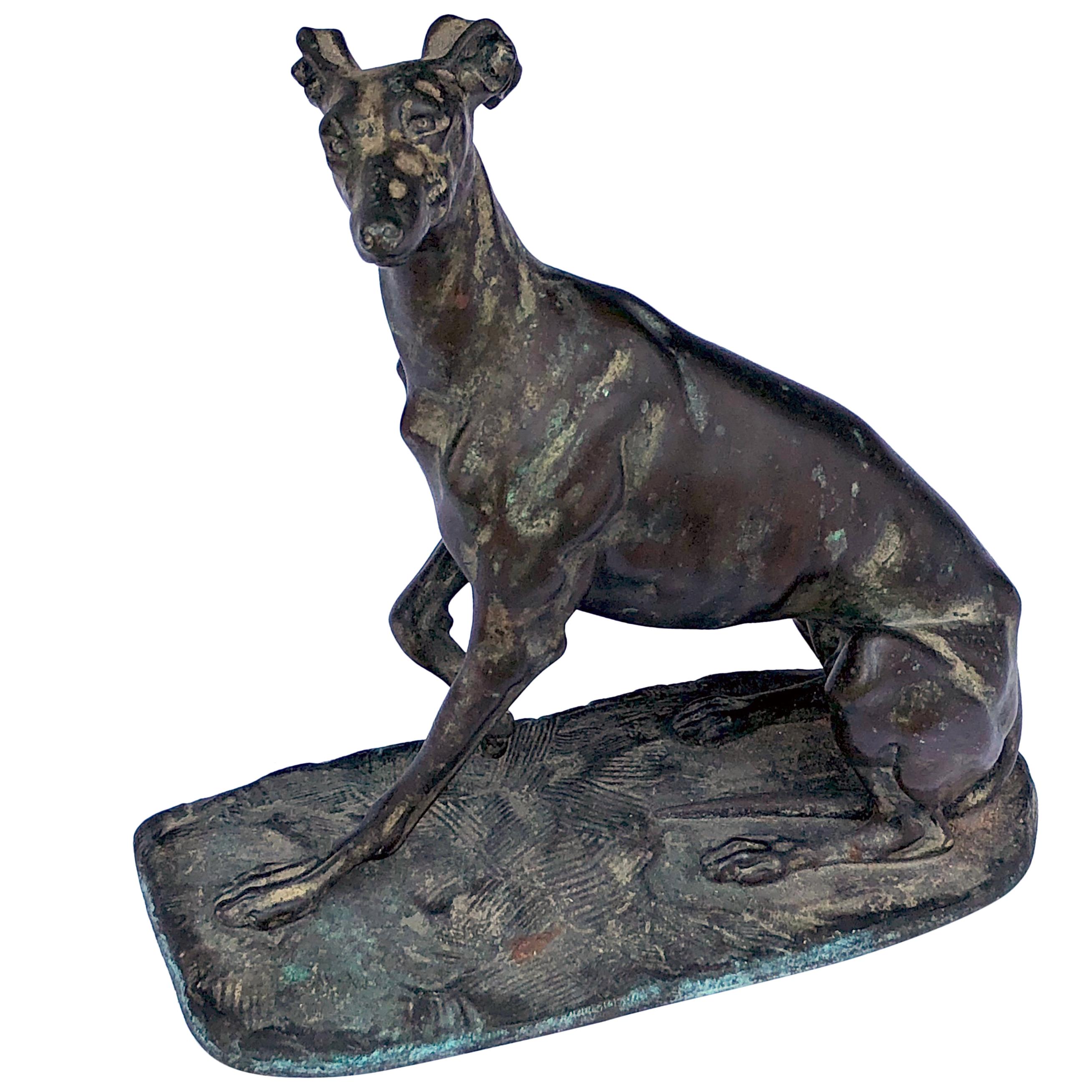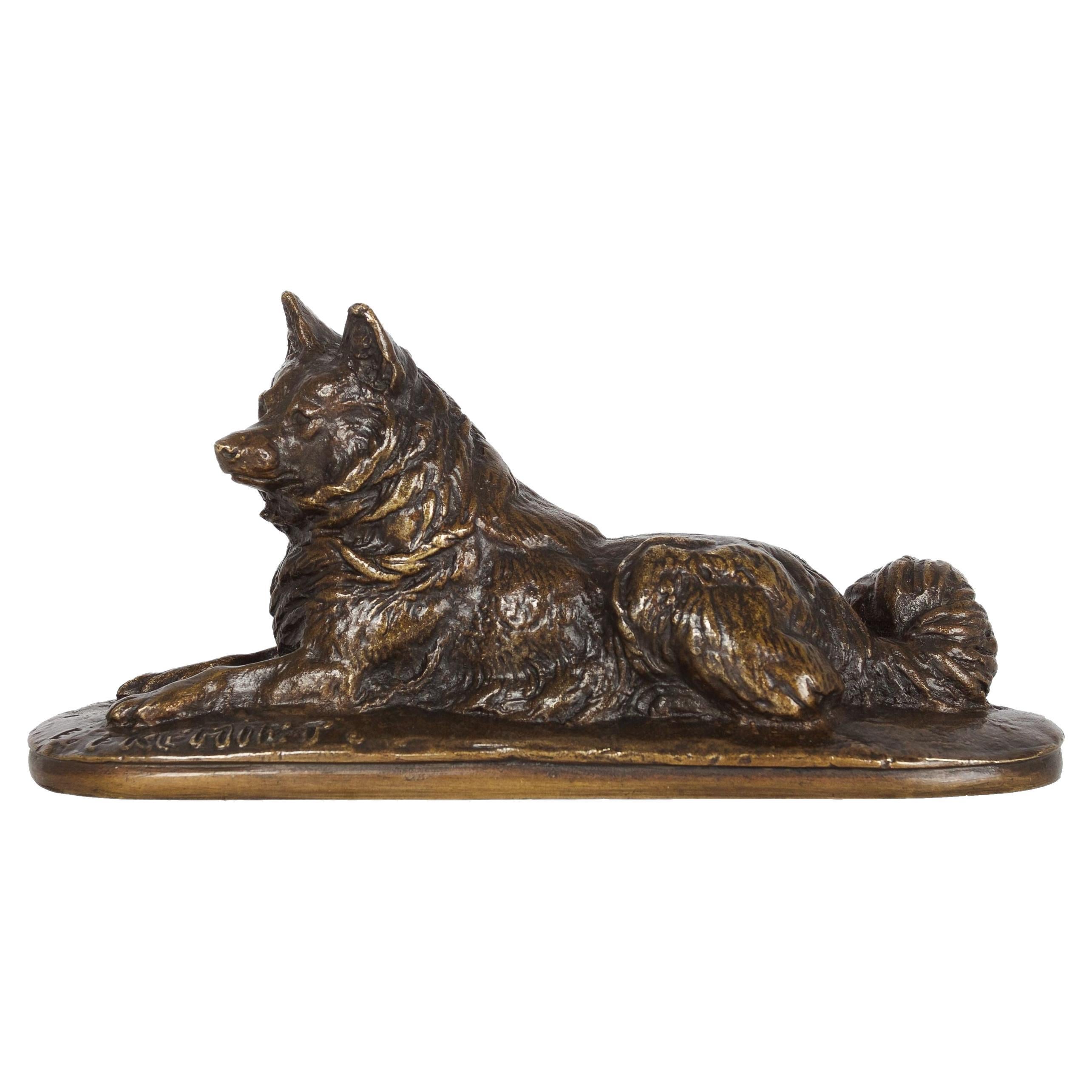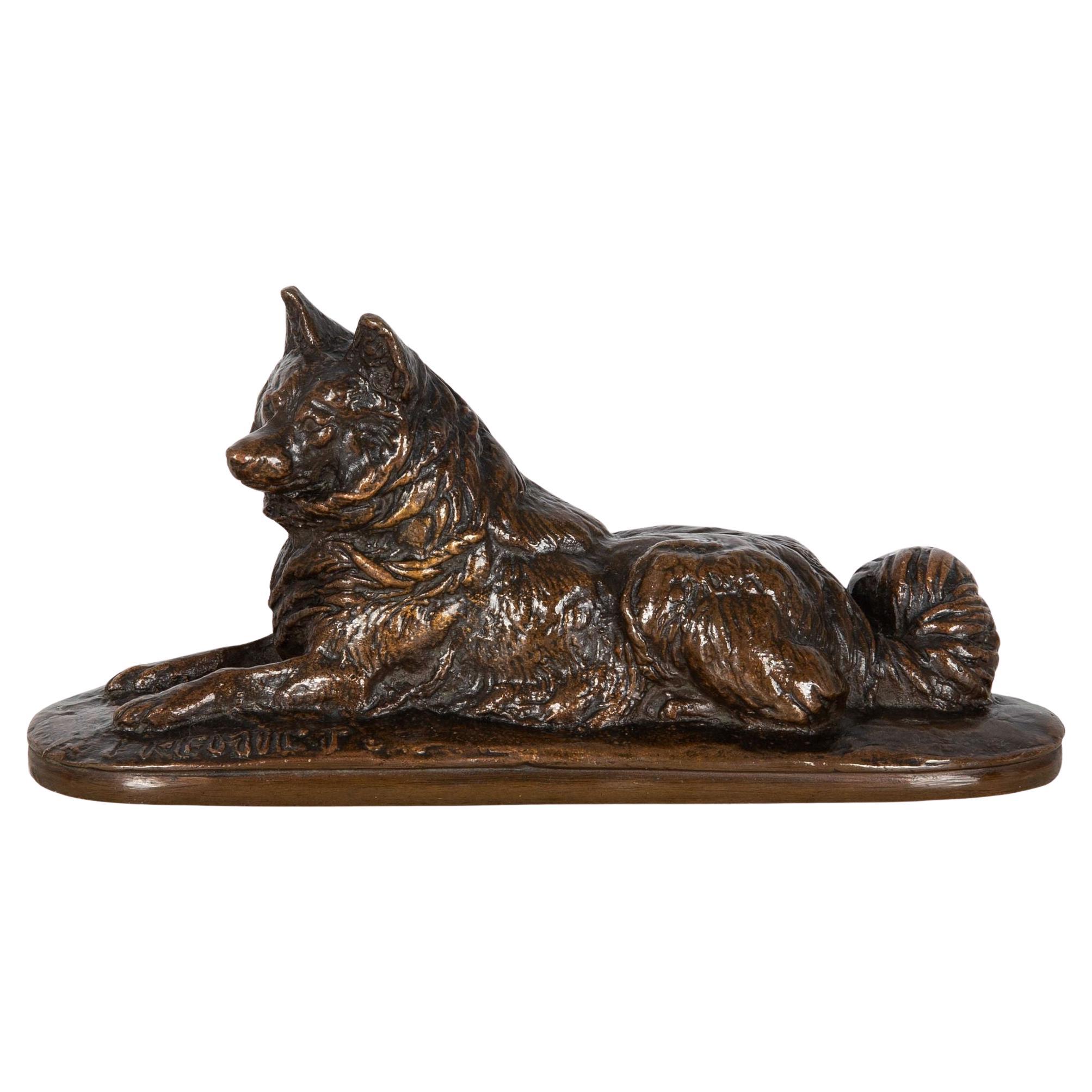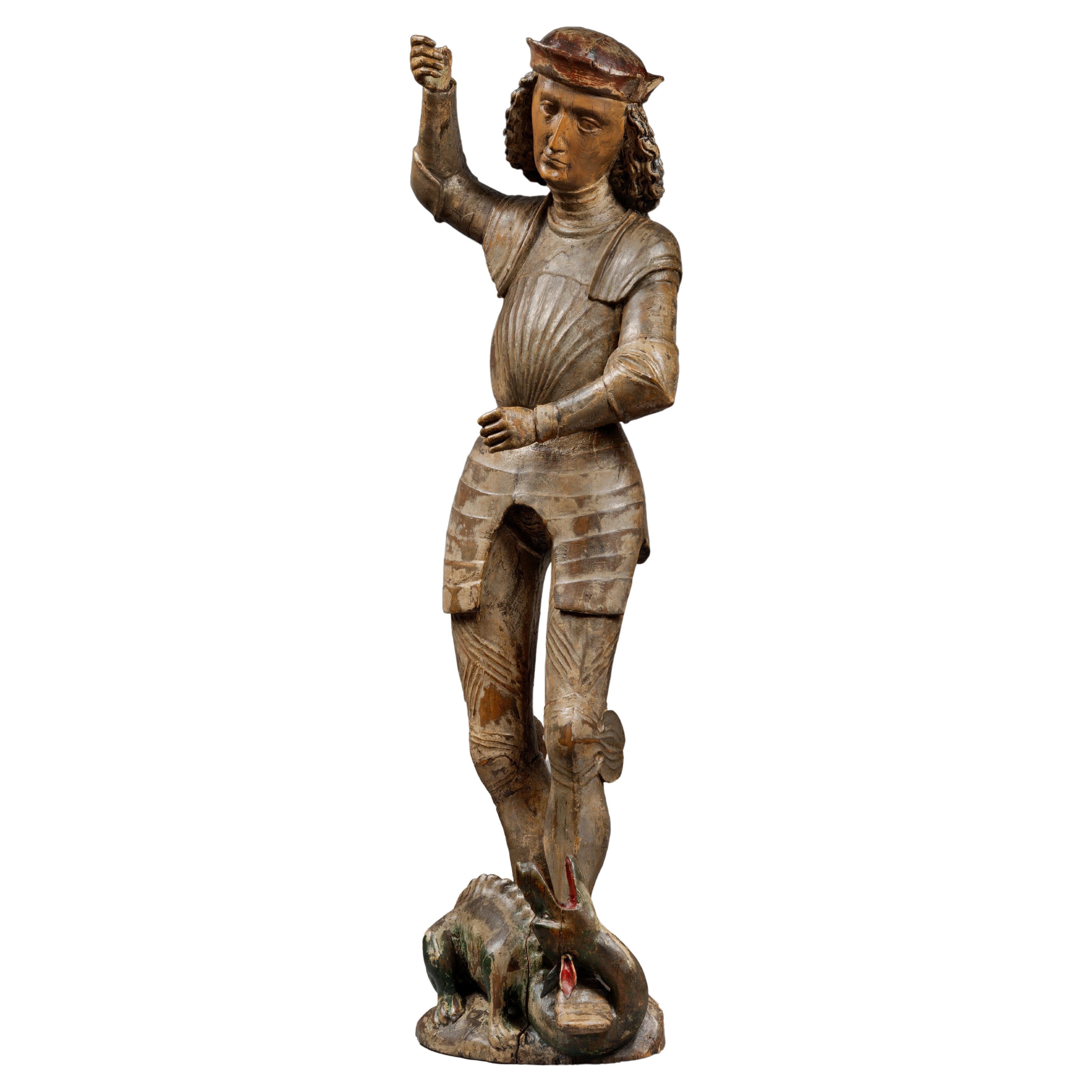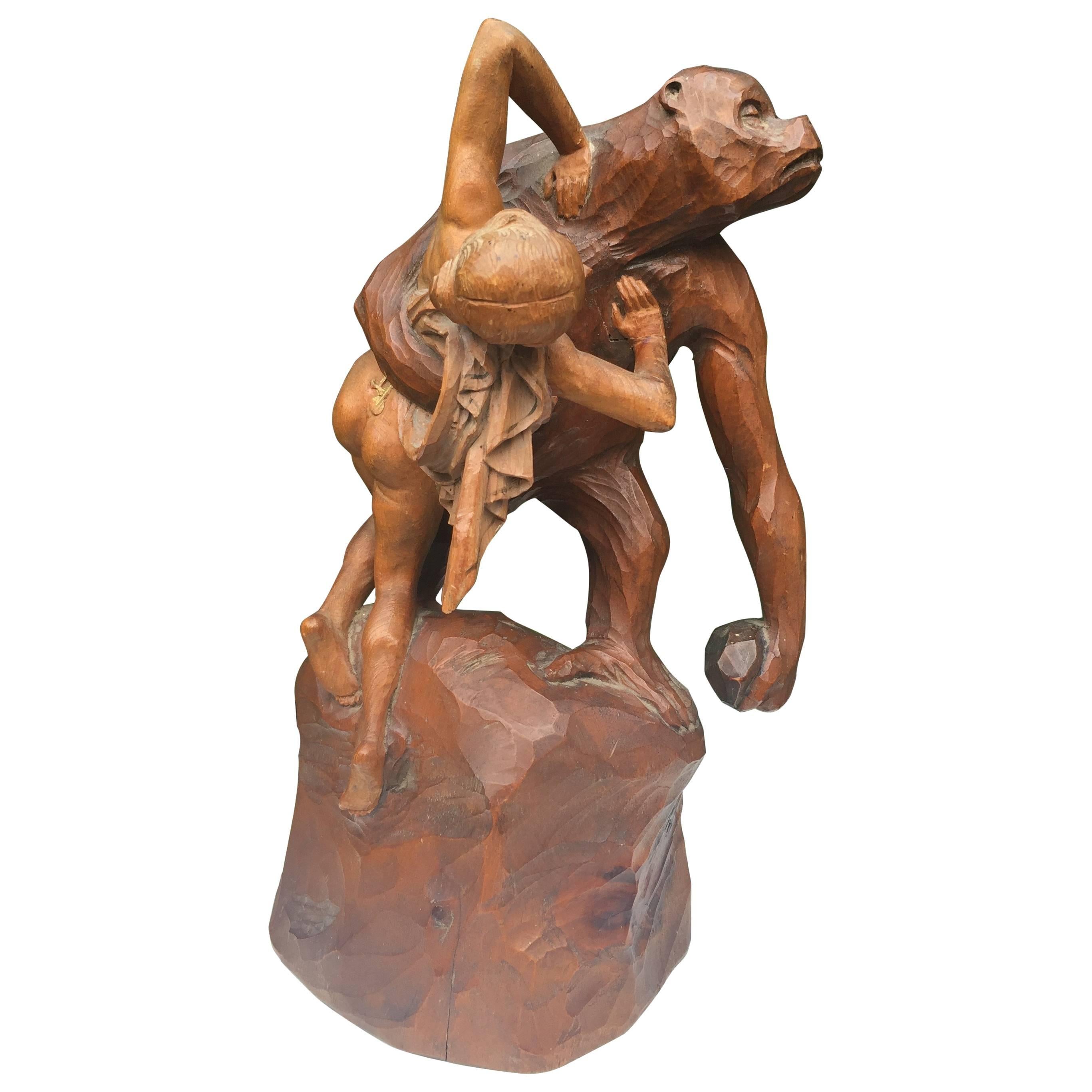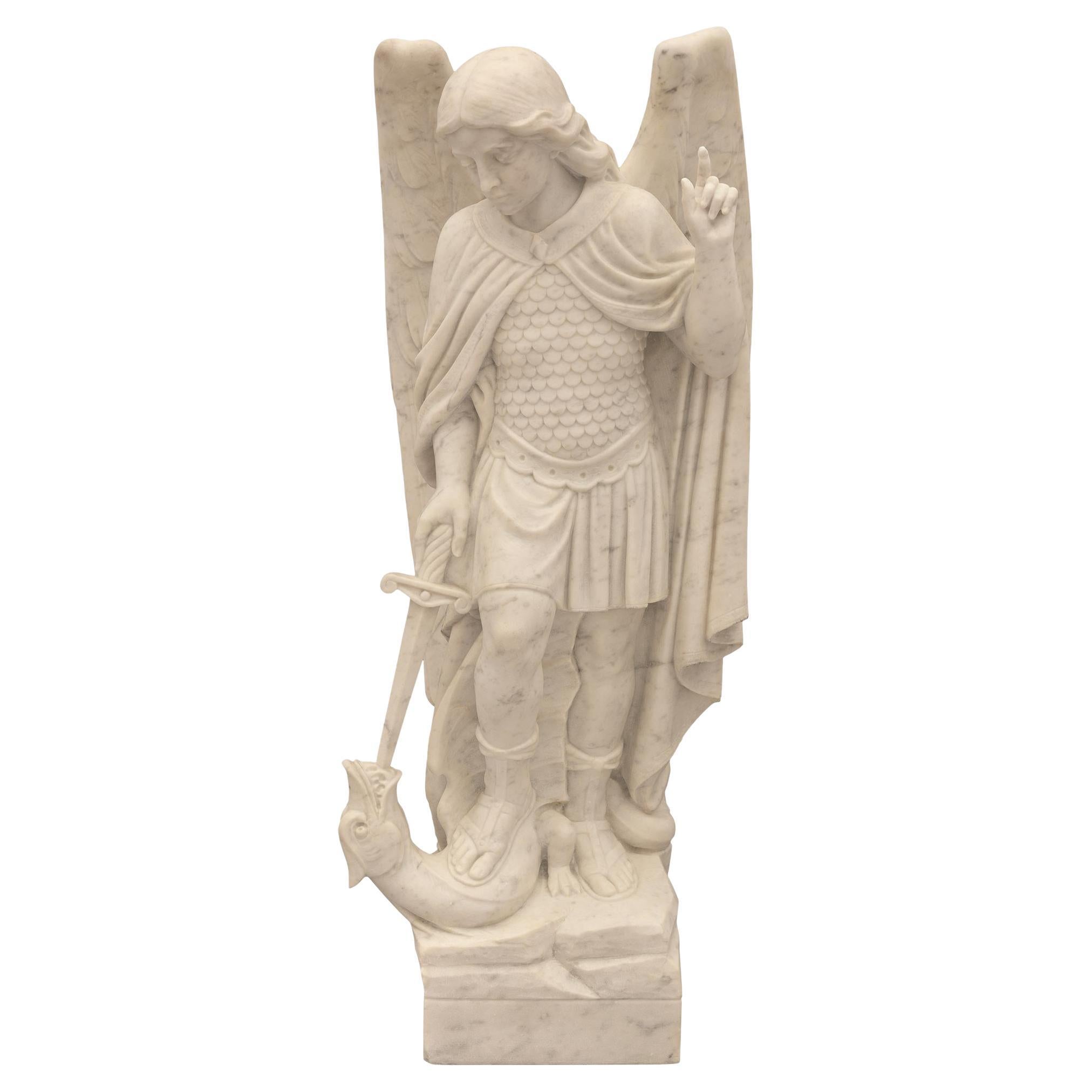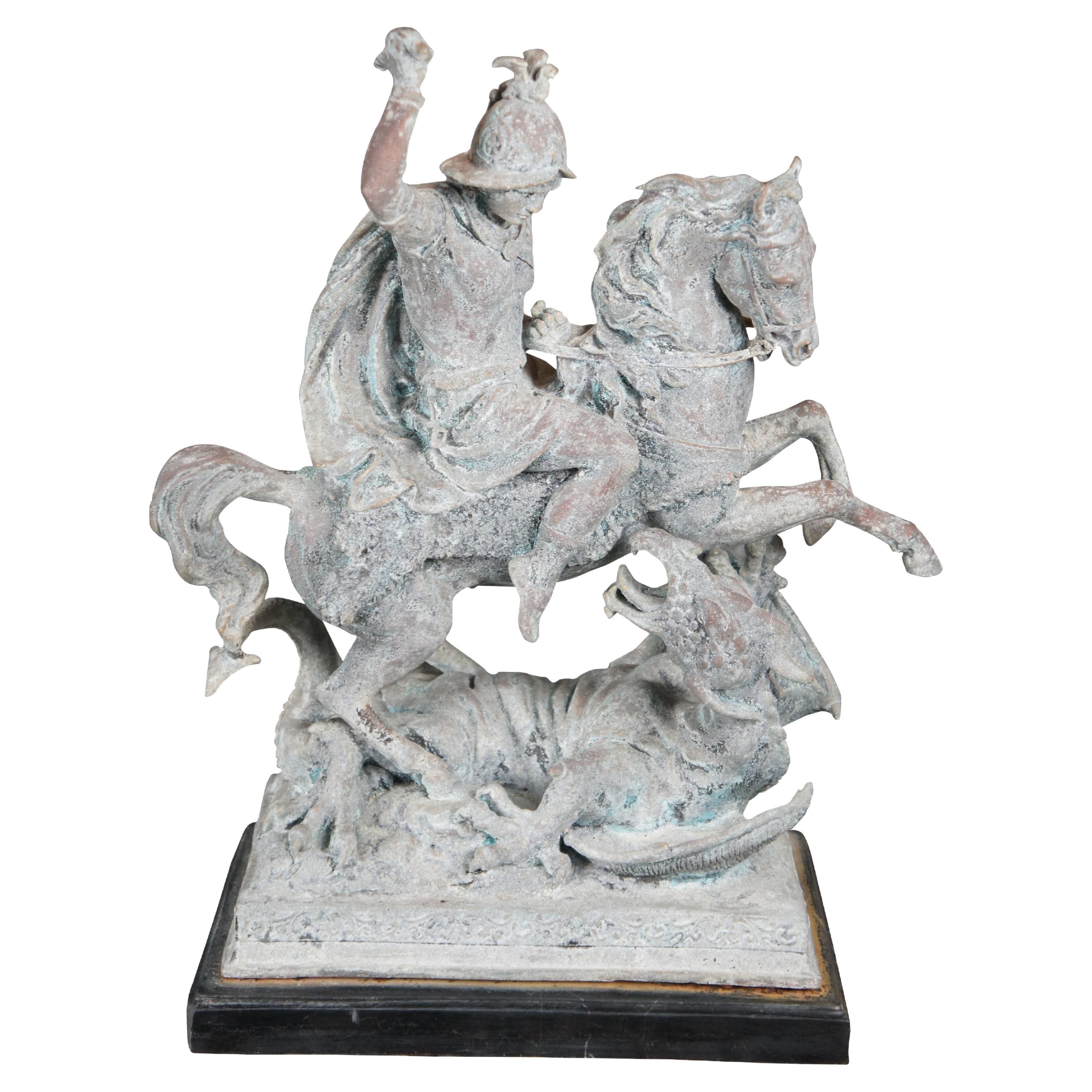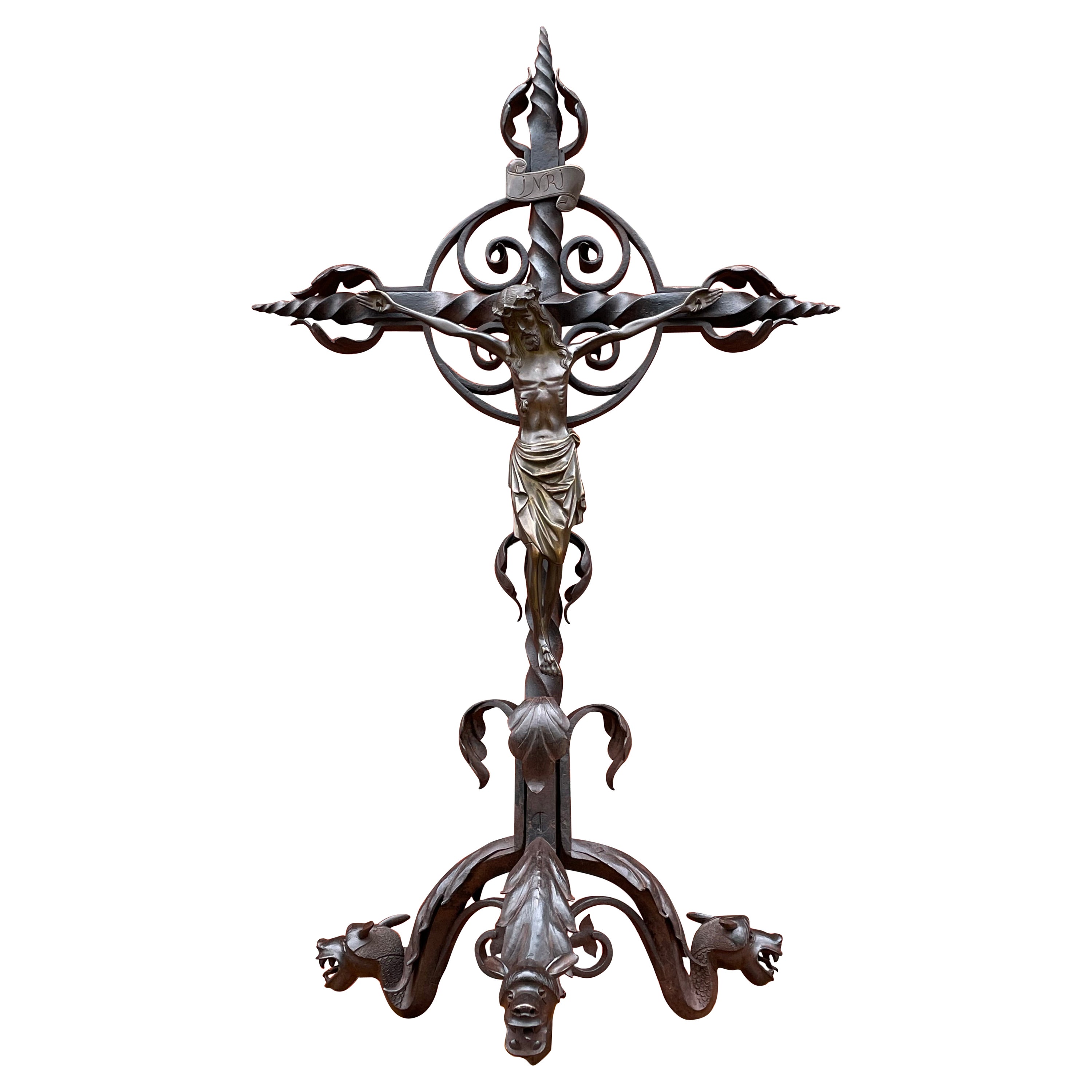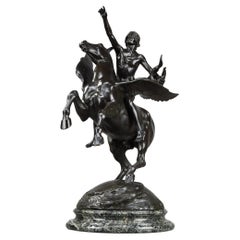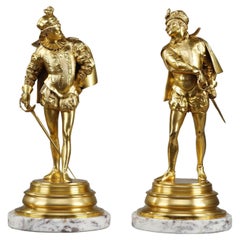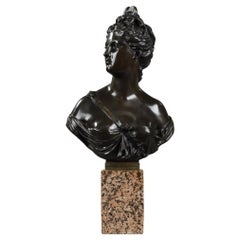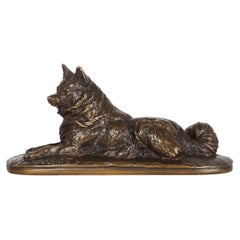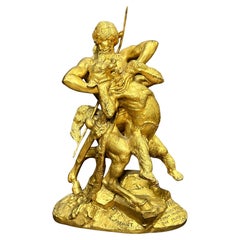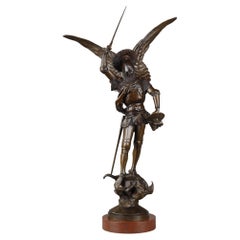
Bronze of "Saint Michel Slaying the Dragon" by Emmanuel Fremiet
View Similar Items
Video Loading
Want more images or videos?
Request additional images or videos from the seller
1 of 22
Bronze of "Saint Michel Slaying the Dragon" by Emmanuel Fremiet
About the Item
- Creator:Emmanuel Fremiet (Artist)
- Dimensions:Height: 24.81 in (63 cm)Width: 13 in (33 cm)Depth: 7.88 in (20 cm)
- Style:Gothic Revival (In the Style Of)
- Materials and Techniques:Bronze,Patinated
- Place of Origin:
- Period:
- Date of Manufacture:1890
- Condition:Wear consistent with age and use. In good general condition. Wear and tear from time.
- Seller Location:Paris, FR
- Reference Number:Seller: 31921stDibs: LU2065328518372
Emmanuel Fremiet
Emmanuel Frémiet was born in Paris, France in 1824 and was brought into an upper middle-class family that had very close ties to the world of art. His family was filled with great artists and this included his Cousin Sophie who married a famous sculptor called Francois Rude. Emmanuel’s mother was also an accomplished artist who constantly encouraged him and brought him up into the world of art. At the age of five, he was already was receiving formal training in art in a private school. The start at a young age meant he was able to be accepted at the spectacular Ecole des Arts Decoratifs School at the age of sixteen. Throughout this period he learned everything he needed to then become employed by Werner as his head lithographer within a year, whose duties were to prepare drawings of both animals and men. After a long period of convincing by Sophie and Emmanuel, Francois Rude took Emmanuel as a pupil in his studio to further his learning in modeling and sculpture work. Throughout his young life, he spent a lot of time in zoological gardens and participated in dissections of any animals which had passed away during this time. By the age of seven, he had been exposed to a wide range of different wild animals. To further Emmanuel’s path in art, he was appointed the successor of Antoine Louis Barye as Professor of Drawing after Antoine’s death in 1875. With this new position and like many other great sculptors, he spent a lot of time studying and drawing at the morgue and even went to various embalmers across Paris. This was all of his training to give him the exact measurements and to be able to reproduce the muscle and bone structure of the many men and animals that he witnessed. His first sculpture was exhibited in the Paris Salon in 1843 when he was nineteen and he continued to exhibit his magnificent sculptures for the rest of his life at the Salon. He was even awarded various medals and awards from many of his pieces. As he began with the bronze sculptures, he made many small animal bronzes with very fine detail which are nowadays highly sought after by collectors and museums alike. There were many sculptors during this time that crafted pieces in which showed a cruel nature, but Emmanuel was known for the soft and gentle pieces of work which often were amusing. At the age of twenty-five, he was to receive more commissions than any other sculptor before or during his time. It became near impossible to be able to walk the streets without seeing one of Emmanuel’s many smaller bronze sculptures. This amazing sculptor continued crafting works, but also proceeded to train new sculptors, taking on near twenty pupils each time. Unfortunately, this great sculptor passed away in 1910.
About the Seller
4.9
Gold Seller
These expertly vetted sellers are highly rated and consistently exceed customer expectations.
Established in 2001
1stDibs seller since 2016
299 sales on 1stDibs
More From This SellerView All
- Bronze Sculpture of "Pagasus Carrying the Poet to the Regions of Dreams"By Jean Alexandre Joseph Falguière 1Located in Paris, FRImportant edition in bronze with brown patina representing "Pegasus carrying the poet towards the regions of the dream" also called "Apollo on Pegasus" after a model of Jean Alexandr...Category
Antique 1880s French Renaissance Revival Figurative Sculptures
MaterialsBronze
- Two bronze sculptures by Auguste Louis Lalouette "Les Duellistes"Located in Paris, FRTwo bronze proofs with golden patina by Auguste Louis Lalouette (1826-1883), depicting "Le Défi" on a marble base. The duelists, dressed in 16th-century fashion, are dressed with gre...Category
Antique 1870s French Gothic Revival Figurative Sculptures
MaterialsBronze
- Bronze Bust of "Diana the Huntress" After HoudonBy Jean-Antoine HoudonLocated in Paris, FRSculpture in bronze representing Diana the hunter after Jean-Antoine Houdon (1741- 1828). In Roman mythology, Diana is the goddess of the hunt and of the night, similar to Artemis in...Category
Antique 1890s French Busts
MaterialsMarble, Bronze
- Bronze sculpture "Leda and the Swan" by Louis KleyBy Louis KleyLocated in Paris, FRProof in bronze with shaded brown patina depicting Leda and the Swan. A great classic in the 19th century, based on the myth of Leda seduced by Zeus, who took the form of a Swan. Ear...Category
Antique 1880s French Figurative Sculptures
MaterialsBronze
- Bronze Figure of Young Psyche by Paul DuboyBy Paul DuboyLocated in Paris, FRThis brown and gold patinated bronze figure was crafted by the French sculptor Paul Duboy. It features a little girl, psyche, standing on a naturalistic base. The bronze sculpture is set upon a round marble plinth...Category
Antique 19th Century French Napoleon III Figurative Sculptures
MaterialsMarble, Bronze
- Bronze "The Girl with the Bird and the Shell" After PigalleBy Jean-Baptiste PigalleLocated in Paris, FRSculpture in patinated bronze representing a seated child feeding a bird, after Pigalle. The original "the girl with the bird and the shell" is a counterpart of "the child with the cage" by Jean-Baptiste Pigalle. The naked child...Category
Antique 1890s French Busts
MaterialsBronze
You May Also Like
- Expressive Bronze Greyhound; Possibly by Emmanuel FremietBy Emmanuel FremietLocated in San Francisco, CAAn expressive and well-executed bronze greyhound; possibly by Emmanuel Fremiet (Paris 1824-1910); this wonderfully expressive seated greyhound with head turned and paw raised.Category
Antique Late 19th Century French Animal Sculptures
- French Antique Bronze Sculpture of Husky Dog by Emmanuel FremietBy Emmanuel FremietLocated in Shippensburg, PAEMMANUEL FREMIET French, 1824-1910 Chien loulou couché Nuanced brown patina on sand-cast bronze Signed in base "E. FREMIET" a Charles More cast numbered 213 Item # 202FPP12G A good lifetime casting by Charles More numbered 215, it captures the entirely relaxed spirit of the recumbant husky dog...Category
Antique 19th Century French Romantic Animal Sculptures
MaterialsBronze
- Rare Gilt Bronze Sculptural Group By Emmanuel Fremiet (1824 - 1910)By Emmanuel FremietLocated in Norwood, NJEmmanuel Fremiet (1824 - 1910) Gilt bronze figural group of a Satyr battling a bear, signed: E. Fremiet with foundry mark: F. Barbedienne Fondeur. Latin transcription on base: Teree ...Category
Antique Late 19th Century French Figurative Sculptures
MaterialsBronze
- Rare Emmanuel Fremiet “Husky Dog” Bronze Sculpture, Charles More cast no. 38By Emmanuel FremietLocated in Shippensburg, PAEMMANUEL FREMIET French, 1824-1910 Chien loulou couché Nuanced medium-brown patina on sand-cast bronze Signed in base "E. FREMIET" a Charles More cast numbered 38 Item # 311GTS0...Category
Antique 19th Century French Romantic Animal Sculptures
MaterialsBronze
- Beautiful Sculpture Depicting Saint George Slaying the DragonLocated in Saint-Ouen, FRBEAUTIFUL SCULPTURE IN POLYCHROME LINDEN REPRESENTING SAINT GEORGE SLAYING THE DRAGON ORIGIN : SOUTHERN GERMANY, SWABIA PERIOD : LATE 15th CENTURY Polychrome linden wood, silvered flange Measures: Height : 104 cm Width : 21 cm Good state of conservation, original polychromy HISTORICAL Officer in the Roman army, Saint George passed through a city plagued by a voracious dragon that devoured its inhabitants. To appease the monster's hunger, the villagers offered him sheep, but when all the cattle were sacrificed, two young people were drawn. One day, fate designated the king's daughter, forced to be delivered to the dragon. Initiating a fight to save her, Saint George, on his horse, triumphed over the monster by piercing it with his spear. In order to symbolize the victory of faith over Evil, the different versions of the legend end with the death of the dragon. However, the Golden Legend, by Jacques de Voragine affirms that the creature was only wounded and that the saint would have dragged it, chained, at his side. Before leaving the city, Saint George distributed to the poor the money that the king had given him as a reward. After his victory over the dragon, came the passion of the saint. Indeed, Saint George was martyred for refusing to sacrifice to pagan idols during the persecution of Diocletian. The saint suffered numerous physical abuses from which he miraculously survived. He was eventually beheaded and his holy body was retrieved by an angel. DESCRIPTION This polychrome sculpture represents Saint George standing, his foot on the dragon which he strikes down with a spear. This image is one of the most evocative of the iconography of Saint George. He is represented young and beardless, in infantry armor, typically German, due to the length of the poacher who protects the thighs of the saint. The armor covers his whole body, from the neck, with the gorget, to the foot with the sabatons. The armor is realistic thanks to the precision of the parts composing it and this silver highlight which gives it a patina with metallic reflections The saint is wearing a hood with raised brown edges, revealing curly hair down to the bottom of his neck. The face of the saint seems serene, and his attitude controlled, a symbol of chivalrous virtues. Concerning the posture, Saint George raises his right arm and bends the left in order to plant his spear in the mouth of the dragon. He is in contrapposto, his left foot crushing the long neck of the monster. The dragon, on the other hand, is salamander-like with large, pointed ears and a large, jagged crest on its back. The creature opens its mouth and twists its neck in pain. A green color covers its skin, and highlights of red are located inside its mouth and ears. This exceptional piece is the reflection of a remarkable sculptural work, due to the harmony that emerges from the composition, the precision of the details and expressions, as well as the contribution of the polychromy that animates this scene. LITERATURE Louis Réau, Iconographie de l’Art Chrétien...Category
Antique 15th Century and Earlier Figurative Sculptures
MaterialsWood
- Saint George slaying the dragon, Flanders, 17th centuryLocated in PARIS, FRCarved alabaster group, with base, representing Saint George slaying the dragon. Flanders, 17th c. Missing horse's tail, chips on the base and gluing (with original parts). Traces of polychromy and gold repairs. Beautiful, very expressive ensemble. In a legend, Saint George—a soldier venerated in Christianity—defeats a dragon. The story goes that the dragon originally extorted tribute from villagers. When they ran out of livestock and trinkets for the dragon, they started giving up a human tribute once a year. This was acceptable to the villagers until a princess was chosen as the next offering. The saint thereupon rescues the princess and kills the dragon. The narrative was first set in Cappadocia in the earliest sources of the 11th and 12th centuries, but transferred to Libya in the 13th-century Golden Legend.Category
Antique 17th Century Dutch Louis XIII Figurative Sculptures
MaterialsAlabaster
